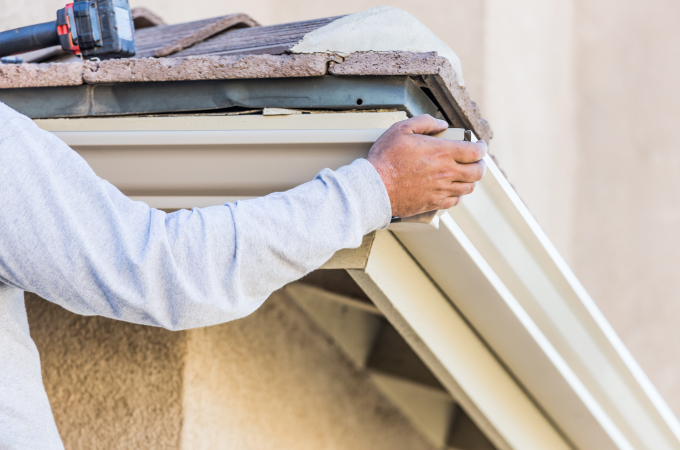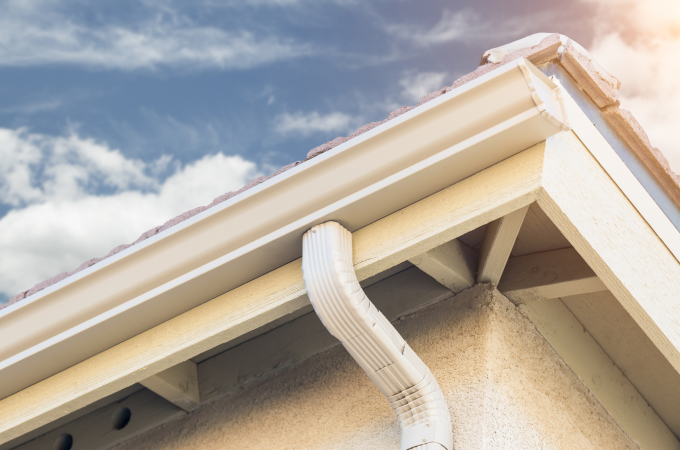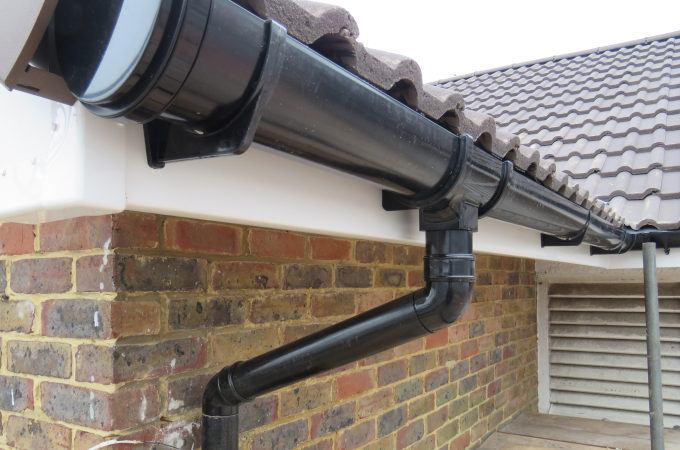“It takes less time to do things right then to explain why you did them wrong.”
– Henry Wadsworth Longfellow
In the home construction industry, a company’s reputation is everything. Offering quality work and craftsmanship leads to happier and more satisfied customers. With each and every job there is an opportunity to turn a first-time customer into a lifetime client. When things go wrong or the installation isn’t up to par, we put both our success and reputation at risk. For this reason, it is important to always provide the best in both workmanship and service with each rain gutter installation you complete.
Here are the five most common rookie mistakes made when installing rain gutters and how you can avoid them:
Mistake #1: Using the Wrong Rain Gutter Size
How much rain your gutter is able to handle is critical to its ability to be effective in draining it away from the home. Too small of a gutter and the system can be overloaded with rain water and unable to keep up with heavy downfalls. This improper sizing leads to not only inefficient drainage but also gutter damage and even foundational issues around the area. Both the average rainfall within the region and the structure’s roof size and pitch should be taken into consideration when choosing the size of the rain gutters installed.
Mistake #2: Gutter Hangers Spaced Too Far Apart
Gutter hangers serve an important function in the overall system. They are what mount the gutters themselves to the home. Unfortunately many installers place these hangers too far apart. When hangers are improperly spaced, rain gutters begin to sag which can lead to pooling water in these sections. This additional load can cause the gutters to eventually separate from the home. Gutter hangers should always be placed at least every three feet for proper support (2 feet in northern climates where snow and ice can add additional weight on the gutters).
Mistake #3: Improper Pitch
The pitch or angle at which the rain gutters are hung is what allows the water to flow smoothly away from the home. Problems occur when the pitch is either too steep or not steep enough. When the pitch is overly sharp, water moves too quickly through the system causing overflow. When the gutters aren’t angled enough, the water sits in the system rather than flowing out. Both can lead to gutter damage and other exterior problems around the home. A good rule is to allow for a ¼” slope towards the downspouts for every 10 feet of gutter. This will ensure proper drainage of the system.
Mistake #4: Having Too Many Seams
The seams of the rain gutter system are the weakest points and the area most vulnerable to damage. To avoid many common gutter problems such as leaks, it’s important to install a system with the fewest number of seams as possible. Seamless gutters are the best option for avoiding this common installation pitfall.
Mistake #5: Poor Downspout Placement
Where you place the downspouts can be a critical factor in how well the gutter system performs. Similarly how many downspouts you use is also important. When we fail to install enough of them in the correct locations, the rain gutters can experience many issues including overflows during heavy rains as well as standing water. Improper downspout placement can also lead to erosion around the area, insect infestations inside the gutters, and foundation or siding damage all which can be costly to repair.
At GutterSupply.com, we have the tools and supplies you need to complete the quality installation your customers expect. We are proud to offer our contracting partners easy ordering and quick shipping. To view our large inventory of products visit our website or call us at 888.909.7246 to learn more.
 Contractors
Contractors




What is the solution for installing a gutter system where two perpendicular roofs meet?
Hi Anne! Thank you for your inquiry. The simple answer is if the roofs are perpendicular, you would need a miter at the corner where the roofs meet.
Should Should I install gutters if I have a metal roof and I live in a climate that gets a lot of snow?
Yes
What would you recommend as the maximum length of guttering for each downspout?
This depends on many factors; the size of your gutters, the size of your downspouts, the pitch of your roof, etc.
How do we determine the pitch of our roof and what if the valley meets perpendicular? AThe perpendicular is a inside corner do I 45 degree the miter?
The angle, or pitch, of a roof is calculated by the number of inches it rises vertically for every 12 inches it extends horizontally. For example, a roof that rises 6 inches for every 12 inches of horizontal run has a 6-in-12 pitch.
To measure the roof pitch, you’ll need an 18- or 24-inch level, a tape measure, and a pencil. First, measure 12 inches from one end of the level and make a mark. Then, in the attic, place the end of the level against the bottom of a roof rafter and hold it perfectly level. Now measure vertically from the 12-inch mark on the level straight up to the underside of the rafter. That measurement is the number of inches the roof rises in 12 inches.
One 2×3 D/S will handle 40′ of gutter good rule of thumb. Anything longer than that you want to try to get 2 D/S on it if possible if you can’t then the pitch has to be more
are rain gutters still needed after installation of a new roof,?.
Yes. If you live in an area that experiences rain, then you still need gutters after installation of a new roof.
If a customer asks for “full-wrap” what does it mean? Is it gutters on all the horizontal edges or only edges that don’t already have a gutter below them on a lower roof?
Hi Jim! We would assume the customer means the entire house.